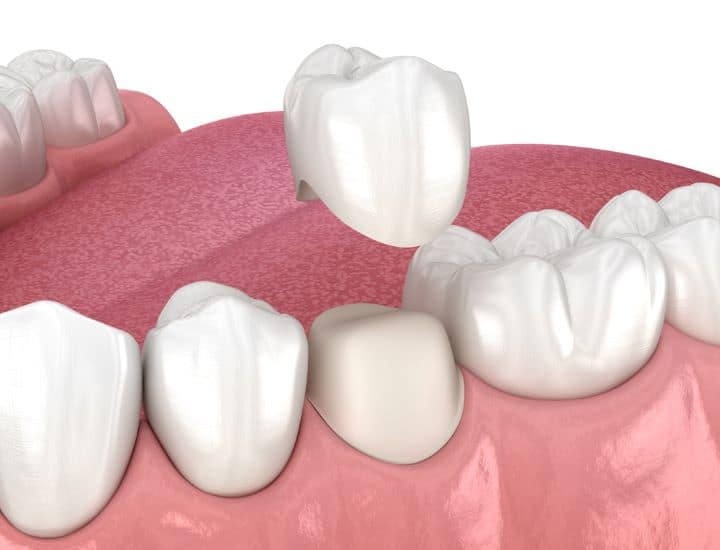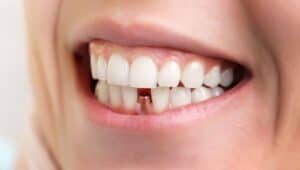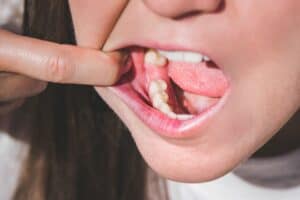“Bruxism” is a term derived from the Greek word “brygmós, ” meaning teeth-grinding behavior, primarily sleep bruxism and awake bruxism.
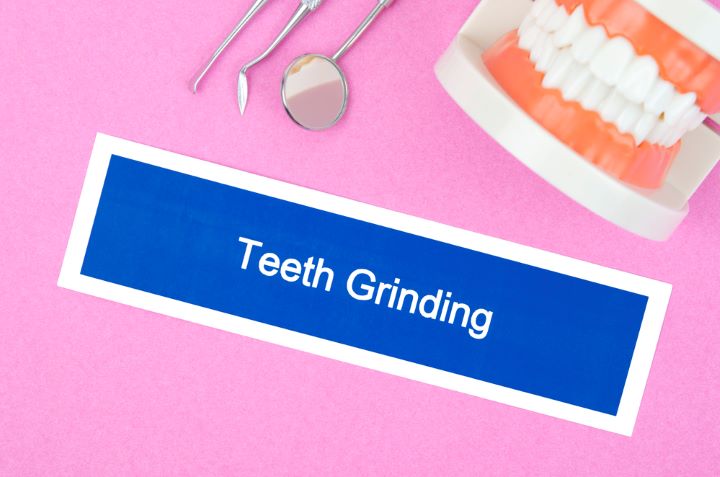
Oral parafunctional activity can have significant implications for dental care and overall health.
Definition of Bruxism:
Bruxism refers to the rhythmic or non-rhythmic gesture of moving the teeth back and forth.
It involves chewing the teeth to a greater or lesser extent, usually associated with jaw clenching.
Patients with Bruxism often show signs of tooth erosion, as well as jaw muscle pain and discomfort, and sometimes their teeth are sensitive.
The underlying etiology of Bruxism remains complex. Stress and anxiety, occlusion problems, and also genetic predispositions each play a role.
Types of Bruxism (Awake Bruxism and Sleep Bruxism):
Awake Bruxism occurs during the conscious hours, typically reacting to stress or tension. This increases abnormal tooth wear and may play a role in temporomandibular joint (TMJ) disorders.
However, sleep bruxism occurs when you grind your teeth at different stages of the sleeping process and is usually accompanied by other movements associated with events during slow wave or rapid eye movement cycles.
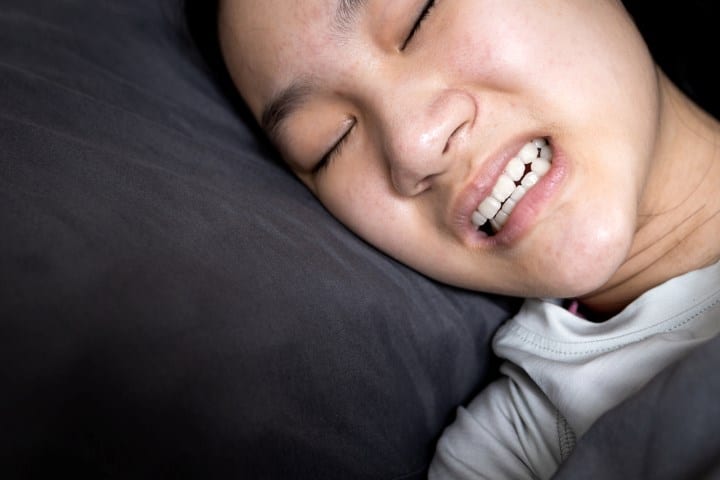
However, sleep bruxism can be more challenging to diagnose due to its nocturnal nature, but not less important—in terms of pernicious effect on oral health.
Prevalence of Bruxism:
The incidence of Bruxism varies among different populations, with some estimates showing that many people have this condition at one time or another.
Though occasional bruxing usually does not lead to severe consequences, chronic and untreated tooth grinding may also result in dental complications: enamel destruction, teeth fractures requiring root canal treatment, or emergency care involving placement of crowns or bridges.
Symptoms and Causes of Bruxism:
Bruxism is the habitual grinding or clenching of teeth and represents an essential oral health threat; thus, it requires detailed knowledge about its symptoms and pathogenesis.
Common signs and symptoms of Teeth Grinding:
Bruxism sufferers often manifest recognizable symptoms. The most common symptoms of bruxism are tooth sensitivity, jaw pain, headaches, and worn-out teeth surfaces.
Two, because the condition afflicts many who sleep, it is often difficult for sufferers to recognize themselves. Therefore, paying more attention to these symptoms is necessary to find early detection and intervention measures earlier.
Potential causes of teeth grinding / Bruxism (stress, anxiety, misaligned teeth, etc.):
It is essential to understand the causes of Bruxism to prevent it.
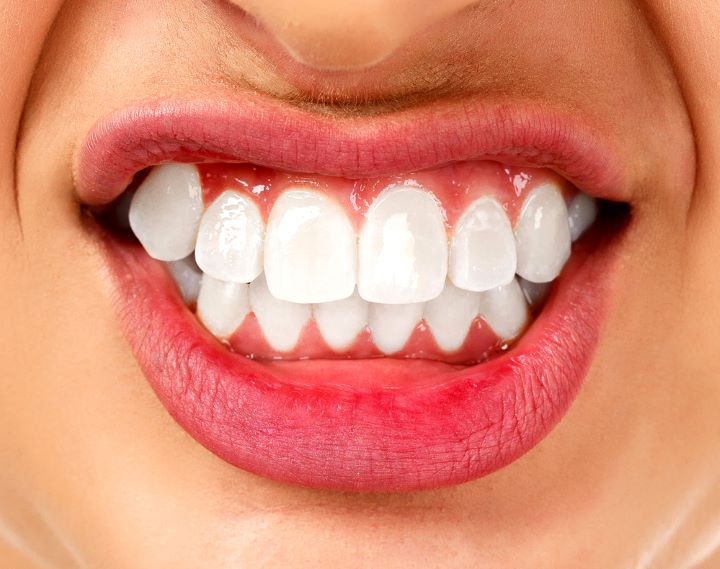
In terms of stress and anxiety are also primary contributors to teeth grinding, creating a further cycle in which heightened emotional states become manifest physically in the form during sleep.
Besides, problems with misaligned teeth or a bad bite can result in Bruxism, where the jaw tries to get into a more comfortable position.
Understanding the intricate relationship between these aspects is essential to creating specific therapeutic plans.
Risk factors for developing Bruxism:
Some individuals are more prone to this disorder, which underscores the need for identifying prominent risk factors. Stress-filled lifestyles, anxiety disorders, and sleep apnea can increase the risk of Bruxism.
In addition, age is more prevalent in children, and specific personality characteristics like hostility and competitiveness influence the risk factors.
Recognizing these risk factors allows a proactive attitude to avoid the adverse effects of Bruxism on oral health and quality of life.
Effects of Bruxism on Oral Health:
Bruxism, which involves repetitive grinding or clenching of teeth and has far-reaching implications for oral health, can cause several complications that are not purely dental issues.
The impacts of Bruxism on oral health concern numerous issues associated with the teeth, jaw, and generally whole body condition.
Impact on Teeth:
The impact on the teeth is one of the most prominent outcomes. Above the continuous grinding, it is often accompanied by wear that makes them so flat as to be or surfaces completely chipped.

Sometimes persistent Bruxism has led to more widespread dental injuries–for which aggressive treatment is needed. This not only produces cosmetic problems but also makes decay and sensitivity likely.
Effects on Jaw:
Besides the teeth, Bruxism affects the jaw and is usually associated with Temporomandibular Joint (TMJ) disorders and muscle pain.
The continuous force and stress on the mandibular condyle may produce pain, click sounds, and a limited range of motion.
Furthermore, overworking facial muscles associated with Bruxism is another factor that causes facial pain and headaches, interfering with the quality of life.
Relationship between Bruxism and other Oral Health Issues:
In addition, Bruxism is closely related to other oral health problems.
The force associated with teeth grinding can lead to gum recession that may uncover the roots of one’s tooth and result in increased decaying.
The habitual characteristic of Bruxism worsens underlying dental pathology and jeopardizes treatment outcomes.
Diagnosing Bruxism:
Bruxism, or the unconscious clenching and grinding of teeth, constitutes a significant hazard to oral health.
Early identification is critical in mitigating long-term complications associated with this condition.
Diagnosing Bruxism requires combining dental professionals’ knowledge and self-monitoring at home.
How Bruxism is Diagnosed:
Typically, the diagnosis of Bruxism begins with a thorough dental examination. Dentists regard tooth surface wear, enamel erosion, and heightened sensitivity symptoms as telltale signs.

Moreover, other questions can be asked to see if there are accompanying symptoms like pain in the jaw area or headaches related to Bruxism.
Dentists may perform additional testing to confirm the diagnosis and determine the severity, such as an EMG to measure muscle activity during sleep or a full sleep quality assessment or polysomnogram.
The Role of Dental Professionals in Diagnosing Bruxism:
Dental professionals diagnose Bruxism. Dentists are educated to detect dental deviations and oral phenomena of Bruxism.
They could apply diagnostic methods such as a dental x-ray to determine the level of damage and inform treatment planning.
Furthermore, dental practitioners work with other healthcare professionals like sleep specialists who provide a holistic diagnosis and treatment process.
Identifying Signs of Bruxism at Home:
Although dental visits are essential, individuals can also assist in the diagnosis process by recognizing bruxism signs at home.
Individuals may seek professional evaluation upon consistent observations of pain in the facial muscles, discomforts in their jaws, or any other form of unusual tooth wear.
Also, keeping a sleep diary to document symptoms and practices regarding sleeping can provide valuable information for the individual and their dental care team.
Your sleep partner can also help you identify your sleep habits.
Treatment and Management of Bruxism:
Bruxism, the involuntary clenching or grinding of teeth, necessitates a comprehensive approach for effective treatment and management.
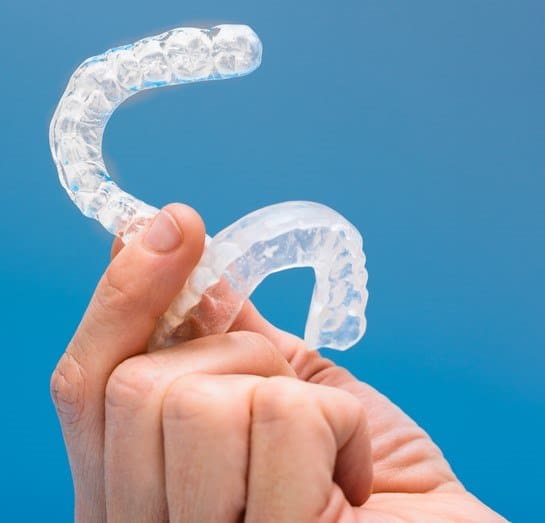
Lifestyle changes to reduce Bruxism Symptoms:
Lifestyle changes play a pivotal role in mitigating bruxism symptoms.
Individuals are advised to cultivate habits that reduce stress, such as regular exercise, maintaining a well-balanced diet, and adopting relaxation techniques like meditation or deep breathing exercises.
These lifestyle adjustments contribute significantly to alleviating the underlying factors that trigger Bruxism.
Using a mouth guard, or having antidepressant therapy can also help you reduce your incidence of Bruxism.
Dental interventions (mouthguards, dental correction, etc.):
Dental interventions serve as a critical element in bruxism management. Custom-fitted mouthguards, designed to cushion and protect teeth during grinding episodes, offer a practical solution.
Additionally, dental correction procedures, such as occlusal adjustments or dental splints, aim to realign the bite and reduce the impact of Bruxism on oral structures.
Regular dental check-ups are crucial for identifying and addressing these issues promptly.
Stress management and relaxation techniques for Bruxism:

Stress management is paramount in bruxism treatment. Implementing relaxation techniques is essential to break the cycle of stress-induced teeth grinding.
Techniques such as biofeedback, cognitive-behavioral therapy, and muscle relaxation exercises empower individuals to regain control over subconscious grinding habits.
By integrating these approaches, individuals can embark on a holistic journey towards effectively treating and managing Bruxism, safeguarding their oral health and overall well-being.
Raising Awareness and Understanding of Bruxism:
Bruxism is the unconscious fixing or grinding of teeth and can have severe implications when discussing oral health. Diagnosing and managing Bruxism is of paramount importance in attaining overall health. The first step in preventing potential complications is to appreciate its importance.
Recognizing and Addressing Bruxism:
Recognizing Bruxism is crucial because it can bring about various dental issues such as tooth wear, jaw pain, and temporomandibular joint disorders.
Failure to pay attention to these indicators can bring about severe outcomes that include enamel erosion and impaired oral activity.
Identifying Bruxism facilitates an individual’s proactive stance, and timely intervention is sought to prevent possible damage.
Raising Awareness about the Effect of Bruxism on Oral Care:
Making people aware of Bruxism’s effects on them is essential for early detection and prevention.
Educational programs may emphasize the sequelae of untreated Bruxism and associate grinding behaviors with oral health problems.
Individuals can make appropriate decisions to preserve their teeth and oral health through enhanced awareness.
Encouraging individuals to Seek Professional Help for Bruxism:
One of the key ways to fight Bruxism successfully is by encouraging people to seek professional help.
Dentists can offer personalized solutions like fitting custom-made mouthguards to reduce grinding effects.
Promoting proactive dental practices allows broader communities to work together to combat Bruxism and protect oral well-being.
Conclusion:
In conclusion, this comprehensive guide sheds light on the multifaceted aspects of Bruxism, offering valuable insights into its definition, types, prevalence, symptoms, causes, risk factors, and profound impact on oral health.
The essay underscores the importance of early diagnosis, emphasizing the role of dental professionals in identifying telltale signs and employing diagnostic methods.
Furthermore, exploring treatment and management approaches, from lifestyle adjustments to dental interventions and stress management, highlights the need for a holistic approach to safeguard oral health.
The imperative to increase awareness and knowledge of Bruxism emerges as a critical theme, stressing the significance of promptly recognizing and treating this condition.
By promoting awareness campaigns and educational programs and encouraging individuals to seek professional help, the essay advocates for proactive measures to mitigate the potential complications of Bruxism.
Ultimately, the guide is valuable in empowering individuals to make informed decisions, fostering a collective effort to combat Bruxism and preserve oral well-being.

